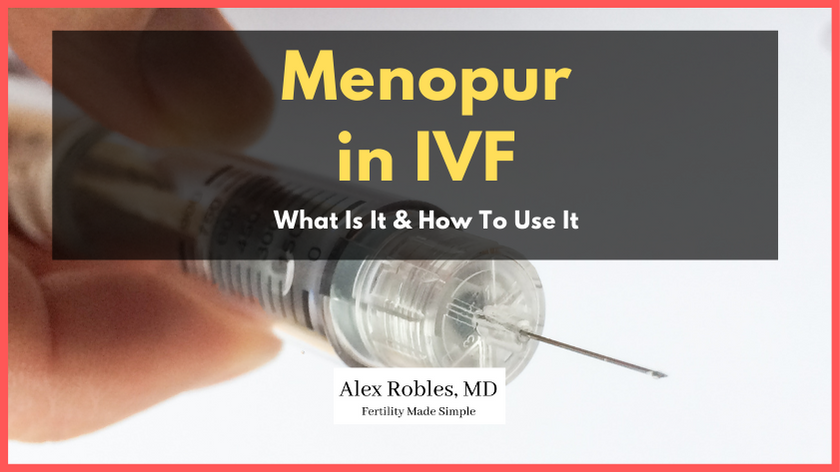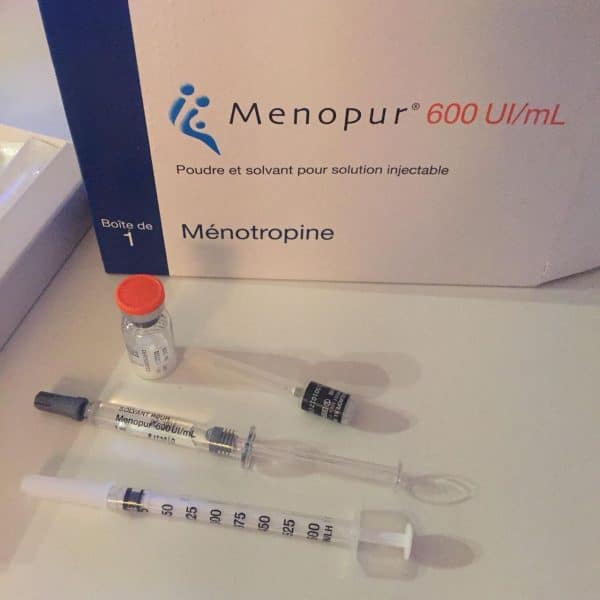What Does Menopur Do in IVF?
If you’re diving into the world of in vitro fertilization (IVF), you’ve probably heard of Menopur. It’s one of those medications that pops up in almost every IVF journey, and for good reason—it’s a key player in helping make your dreams of parenthood come true. But what exactly does Menopur do? How does it fit into the bigger picture of IVF? And why does it matter so much? Let’s break it all down in a way that’s easy to wrap your head around, with some fresh insights and practical tips to guide you along the way.
IVF can feel overwhelming at first, with all the injections, appointments, and new terms thrown your way. Menopur is one piece of that puzzle, and understanding its role can give you a sense of control over the process. Whether you’re just starting out or already knee-deep in your IVF cycle, this article will walk you through what Menopur does, how it works, and what you can expect—plus a few things you might not find in the usual guides.

Why Menopur Matters in IVF
Menopur isn’t just another random drug on your IVF prescription list. It’s a powerhouse that helps your body do something it might not be able to do on its own: grow multiple eggs at once. In a natural menstrual cycle, your ovaries usually release just one egg each month. That’s fine if you’re trying to conceive naturally, but IVF needs more eggs to increase your chances of success. That’s where Menopur steps in.
This medication is a type of gonadotropin, which means it’s packed with hormones your ovaries need to kick into high gear. Specifically, it contains follicle-stimulating hormone (FSH) and luteinizing hormone (LH)—two natural hormones that team up to wake up your ovaries and get those follicles (the tiny sacs that hold your eggs) growing. The goal? To produce several mature eggs that can be retrieved, fertilized, and turned into embryos.
Think of Menopur as a coach for your ovaries. While they might normally take it easy, producing one egg at a time, Menopur pushes them to step up their game. More eggs mean more opportunities for fertilization, which is why it’s such a big deal in IVF.
How Menopur Works in Your Body
So, what’s happening inside you when you inject Menopur? Let’s paint a picture. Your ovaries are like a garden, and the follicles are the seeds. Normally, only one seed gets enough “water” (hormones) to grow into a flower (a mature egg). Menopur acts like a super-charged sprinkler system, giving lots of seeds the boost they need to sprout at the same time.
Here’s the step-by-step rundown of how it works:
- FSH Boosts Follicle Growth: The FSH in Menopur tells your ovaries to start growing multiple follicles. Each follicle contains an egg, so the more follicles you have, the better your odds.
- LH Supports Maturation: The LH in Menopur helps those follicles mature properly. It’s like adding the right nutrients to make sure the flowers bloom strong and healthy.
- Multiple Eggs Develop: Over about 8-12 days, your ovaries respond by growing several eggs instead of just one. Your doctor tracks this with ultrasounds and blood tests to see how things are progressing.
By the time you’re ready for egg retrieval, Menopur has helped create a little team of eggs ready to take the next step. It’s not magic—it’s science working with your body’s natural processes.
The Menopur Process: What to Expect
If you’re new to IVF, the idea of injections might sound intimidating. But don’t worry—Menopur is designed to be manageable, even if it takes a little practice. Here’s what the process looks like from start to finish.
Getting Started with Menopur
Your doctor will prescribe Menopur based on your unique situation—things like your age, hormone levels, and how your ovaries tend to respond. The typical dose starts at 75 to 225 international units (IU) per day, but it could go higher if needed. You’ll inject it once a day, usually in the evening, for about 8-12 days.
Menopur comes as a powder in little vials that you mix with a sterile saline solution. It’s a subcutaneous injection, which means it goes into the fatty tissue just under your skin—most people choose their belly or upper thigh. Your fertility clinic will show you how to mix and inject it, and there are tons of online videos if you need a refresher.
During the Stimulation Phase
Once you start Menopur, you’ll have regular check-ins at your clinic—usually every few days. They’ll use ultrasounds to count your follicles and measure their size, plus blood tests to check your hormone levels. This helps your doctor tweak your dose if necessary. The goal is to get at least a few follicles to around 18-20 millimeters, which signals the eggs inside are mature.
You might feel some changes as the days go on—maybe a little bloating or tenderness in your lower belly. That’s your ovaries working overtime, and it’s totally normal. Toward the end of this phase, you’ll get a “trigger shot” (usually hCG or Lupron) to finalize egg maturation before retrieval.
After Menopur: Egg Retrieval
Once your follicles are ready, Menopur’s job is done. You’ll stop the injections, and about 35-36 hours after the trigger shot, your doctor will perform the egg retrieval. This is a quick procedure where they use a tiny needle to collect the eggs from your follicles. From there, the eggs head to the lab for fertilization, and your IVF journey continues.
Benefits of Menopur in IVF
Menopur isn’t the only fertility drug out there, so why do so many doctors choose it? It’s got some standout perks that make it a go-to for IVF.
- Boosts Egg Numbers: More eggs mean more chances to create healthy embryos. Studies show Menopur can help women produce multiple follicles, even if their ovaries don’t respond well to other meds.
- ** Balances Hormones**: The combo of FSH and LH mimics your body’s natural cycle more closely than FSH-only drugs like Gonal-F or Follistim. Some research suggests this balance might lead to better egg quality, though results vary.
- ** Proven Track Record**: Menopur has been used in IVF for decades, with solid success rates. A 2004 study from Ferring Pharmaceuticals found that women using Menopur had a 31% ongoing pregnancy rate in IVF cycles, compared to 20% with Gonal-F alone.
It’s not a one-size-fits-all solution, but for many, Menopur strikes the right chord between effectiveness and reliability.
Side Effects: What You Might Feel
No medication comes without a few quirks, and Menopur is no exception. Most side effects are mild and manageable, but it’s good to know what might come up so you’re not caught off guard.
Common Side Effects
- Injection Site Reactions: A little redness, swelling, or stinging where you inject is pretty common. Menopur can sting more than other IVF drugs because of its makeup, but it fades fast.
- Bloating and Cramping: As your ovaries grow those follicles, you might feel puffy or tender in your lower abdomen. It’s like mild period cramps for some.
- Headaches or Mood Swings: Hormones can mess with your head—literally. You might get a headache or feel a bit emotional, but it usually passes.
Rare but Serious Risks
- Ovarian Hyperstimulation Syndrome (OHSS): In rare cases (less than 5% of users), your ovaries might overreact, leading to swelling, pain, or fluid buildup. Symptoms like severe bloating or trouble breathing need a doctor’s attention ASAP.
- Ovarian Torsion: Super rare, but growing follicles can twist your ovary. It’s painful and needs quick medical care.
Most people breeze through Menopur with just minor discomfort. If something feels off, don’t hesitate to call your clinic—they’re there to help.
Quick Tip Checklist for Managing Side Effects
✔️ Ice the injection site for 5 minutes before injecting to numb the sting.
✔️ Wear loose, comfy clothes to ease bloating pressure.
❌ Don’t skip your clinic check-ins—catching issues early is key.
✔️ Stay hydrated; it helps with headaches and overall comfort.
Menopur vs. Other IVF Meds: What’s the Difference?
You might wonder how Menopur stacks up against other big names like Gonal-F or Follistim. They’re all gonadotropins, but they’re not quite the same.
| Medication | What’s in It? | How It Helps | Unique Edge |
|---|---|---|---|
| Menopur | FSH + LH | Grows and matures multiple eggs | Mimics natural hormone balance |
| Gonal-F | FSH only | Stimulates follicle growth | Pure, synthetic FSH |
| Follistim | FSH only | Boosts follicle development | Easy-to-use pen injector |
Menopur’s LH component sets it apart. Some doctors believe LH helps eggs mature better, especially for women with lower natural levels (like those with PCOS or older age). A 2023 study in Fertility and Sterility hinted that adding LH might improve embryo quality in certain cases, though more research is needed. If your doctor picks Menopur, it’s likely because they think your body could use that extra LH boost.

Does Menopur Really Work? The Science Says…
You’re probably wondering: does Menopur actually deliver? The short answer is yes, but it’s not a guarantee—IVF success depends on tons of factors like age, egg quality, and your overall health.
- Success Rates: In that 2004 Ferring study, Menopur users had a higher pregnancy rate (31%) than Gonal-F users (20%) in IVF cycles. More recent data from 2021 in Reproductive BioMedicine Online showed similar outcomes, with Menopur holding steady as a reliable option.
- Egg Yield: On average, women using Menopur produce 8-12 eggs per cycle, depending on their ovarian reserve. That’s a solid number for IVF.
- Who It Helps Most: It’s especially effective for women over 35 or those with a sluggish ovarian response, thanks to the LH kick.
But here’s the catch: Menopur can’t fix everything. If egg quality is the issue (which often ties to age), no amount of stimulation will change that. It’s a tool, not a miracle.

Fresh Insights: 3 Things You Might Not Know About Menopur
Most articles cover the basics, but there are some lesser-known angles to Menopur that deserve a spotlight. These nuggets come from digging into recent trends, studies, and real-world experiences.
1. It’s Sourced from an Unexpected Place
Ever wonder where Menopur comes from? It’s made from human menopausal gonadotropin (hMG), which is extracted from the urine of postmenopausal women. Yep, you read that right! Back in the day, nuns in Italy donated their urine for early versions of this drug. Today, it’s a highly purified process, but it’s a cool reminder of how science turns the ordinary into extraordinary.
2. Mixing It Can Cut Down on Shots
Here’s a game-changer not everyone talks about: you can sometimes mix Menopur with other IVF meds like Gonal-F or Follistim in one syringe. This isn’t standard everywhere, but some clinics teach it to reduce the number of injections you need. Fewer pokes, less stress—ask your nurse if it’s an option for you. (Pro tip: Always double-check with your team before trying this!)
3. It Might Affect Your Gut More Than You Think
While bloating gets all the attention, some women report digestive quirks like nausea or constipation during Menopur use. It’s not in every guidebook, but posts on X and forums like Reddit suggest it’s more common than we realize. Why? The hormone surge might slow your digestion. Sipping ginger tea or eating smaller meals could help keep things moving.
Interactive Quiz: Are You Ready for Menopur?
Let’s make this fun! Take a quick quiz to see how prepped you are for Menopur in your IVF cycle. Circle your answers and tally your score at the end.
- How long do you typically use Menopur in an IVF cycle?
a) 2-3 days
b) 8-12 days
c) A month - Where do you inject Menopur?
a) Your arm
b) Your belly or thigh
c) Your back - What’s one common side effect?
a) Hair loss
b) Bloating
c) Improved eyesight
Answers: 1-b, 2-b, 3-b
Score:
3/3: You’re a Menopur pro already!
2/3: Solid start—keep reading!
1/3 or less: No worries, you’re learning fast!
Practical Tips for Using Menopur Like a Pro
Ready to tackle those injections? Here are some down-to-earth tips to make Menopur a breeze, based on real experiences and expert advice.
Step-by-Step Injection Guide
- Set Up Your Space: Find a quiet spot with good light. Lay out your supplies—vials, saline, syringe, alcohol wipes, and a sharps container.
- Mix It Up: Pop 1 mL of saline into the Menopur vial. Swirl gently (don’t shake!) until it dissolves. If you’re using multiple vials, draw the solution into the syringe and repeat.
- Pick Your Spot: Wipe your belly or thigh with an alcohol swab. Pinch the skin lightly.
- Inject with Confidence: Insert the needle at a 45-degree angle, push the plunger slowly, and pull out. Done!
- Dispose Safely: Toss the needle in the sharps container—no regular trash bins here.
Hacks for a Smoother Ride
- Time It Right: Stick to the same evening window (like 7-9 PM) for consistency. Set a phone alarm so you don’t forget.
- Chill Out: Keep unopened vials in the fridge (36-46°F) or at room temp (up to 77°F). Once mixed, use it right away—no saving for later.
- Ease the Sting: Rub an ice cube on the spot first, or exhale as you inject to distract yourself.
Menopur and Your Emotions: The Unspoken Side
Let’s talk about something that doesn’t always make the headlines: how Menopur might mess with your feelings. Hormones are mood-shifters, and FSH plus LH can send you on a bit of an emotional rollercoaster. Maybe you’re snappy one day, teary the next. It’s not just you—it’s biology.
A small 2022 survey by Fertility Network UK found that 68% of IVF patients felt mood swings during stimulation, with many pointing to drugs like Menopur. The fix? Lean on your support system. Tell your partner or a friend what’s up so they know it’s the hormones talking. Journaling or a quick walk can also smooth out the rough edges.
Vote Time: What’s Your Menopur Experience?
We’re curious about your take! Drop your vote below to share your Menopur moment—it’ll only take a sec and helps others feel less alone.
- Best Part: Easy to inject / Worked fast / No big side effects
- Toughest Part: The sting / Mixing vials / Feeling bloated
(Feel free to comment your thoughts too—we’d love to hear!)
The Cost Factor: Is Menopur Worth It?
IVF isn’t cheap, and Menopur adds to the bill. A single 75 IU vial can run $100-$250, and if you’re using 2-4 vials a day for 10 days, that’s $2,000-$5,000 per cycle. Insurance might cover some, but not always. So, is it worth it?
For many, yes. The higher egg yield can mean fewer cycles overall, saving money (and heartache) in the long run. Some clinics offer discount programs, and pharmacies like Mandell’s or Alto might have deals. Check with your doctor about mixing it with cheaper FSH meds to stretch your budget.
Looking Ahead: Menopur’s Future in IVF
Menopur’s been around since the 1990s, but it’s not standing still. Researchers are exploring how its LH component could be tweaked for even better results. A 2024 study in Human Reproduction suggested that personalized LH dosing (based on your baseline levels) might boost embryo quality—something to watch as science evolves.
Plus, with fertility trends shifting (more people starting IVF later in life), Menopur’s role could grow. It’s already a favorite for older patients or those with tricky ovaries, and that demand isn’t slowing down.







